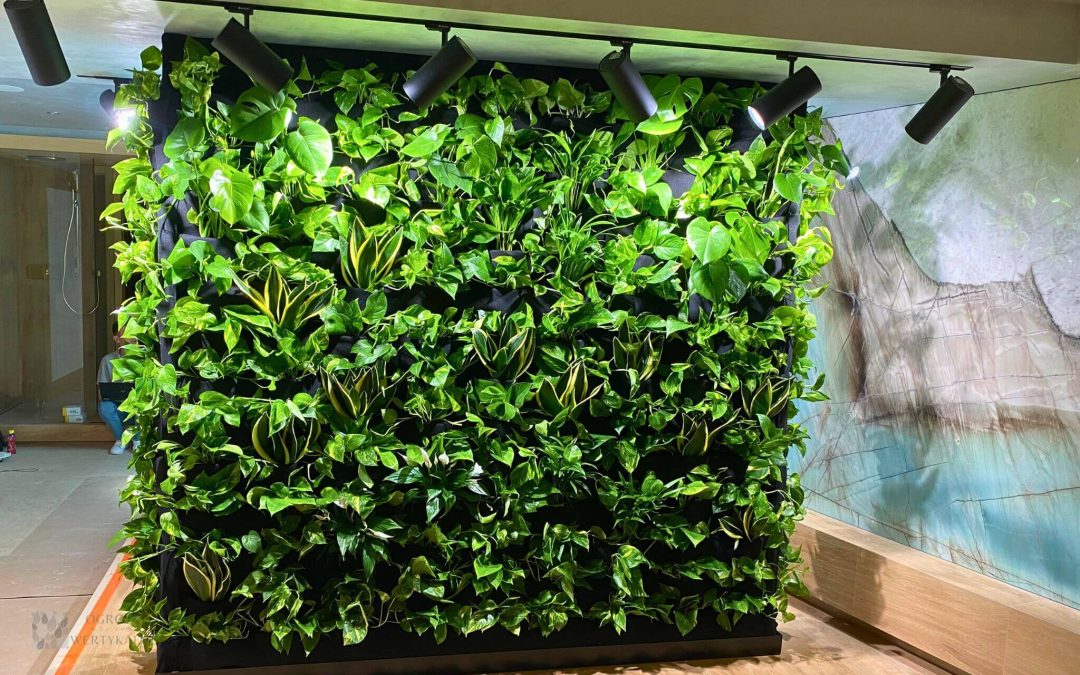A vertical garden is a method of cultivating plants vertically. This type of garden is also known as a green wall or living plant wall. The structure can be freestanding or attached to walls, specially adapted panels, and other supports. There are various types of green walls: exterior and interior vertical gardens. This approach to plant cultivation allows for planting numerous plants on buildings. Green walls with living plants offer an alternative to standard potted flowers. A vertical garden is a space-saving and water-saving solution when planting a large number of seedlings. Besides practical advantages, a green wall with living plants also stands out due to its interesting appearance. Vertical cultivation literally takes traditional gardening to a higher level.
History of green walls
Although we now see green walls with living plants in modern interiors, their history dates back to ancient Babylon. The first mentions of vertical greenery date to the 7th century BC. At that time, King Nebuchadnezzar II gave his wife an extraordinary gift – the Hanging Gardens. This incredible construction, recognized as one of the seven wonders of the ancient world, was placed on ascending terraces. Vines hanging from the roofs covered the palace walls, creating the impression of floating in the air. A system of channels flowing through all levels of the terraces protected the green walls from drying out. Centuries later, the Romans popularized the vertical cultivation of grapevines. Plants were planted near walls or supported by lattices. From the Greeks, they adopted a cascading system that simplified the irrigation of plants in a vertical garden. The vertical composition was practically justified, allowing the plant easier growth and fruit development. It was not until the 1980s that Patrick Blanc, a renowned botanical industry designer, revolutionized the idea of a vertical garden, becoming an inspiration for architects worldwide.
Vertical garden – pros and cons
Plants in vertical cultivation include, among other things, an aesthetic diversification of space. Green walls bring an element of flora to urban spaces, improving air quality and the appearance of the surroundings. A vertical garden gathers various plant species, thereby contributing to increased biodiversity. Moreover, plants absorb heat, which can help regulate the temperature of buildings and their surroundings. A living green wall allows for plant cultivation in a limited space, which is crucial especially in cities where it is difficult to find space for horizontal compositions. The rarely mentioned ability of plants to absorb sounds means that a vertical garden protects against noise. The green wall serves as a natural acoustic barrier. Greenery also filters other air pollutants, such as heavy metals or allergens, creating a healthy and calm environment. A vertical garden also involves the need for regular care and supervision. To keep the green walls with living plants in excellent condition, it is necessary to monitor plant growth and maintain an efficient irrigation system. Vertical cultivation generates modest costs related to the construction and service of the green wall. No plant lives forever, and even the best care cannot stop the natural process of dying. Therefore, there may be a need to replace individual seedlings with new ones from time to time. Regular maintenance and monitoring of seedling development, however, allow one to enjoy the proximity of nature that a green wall provides.
Types of vertical gardens
There are various types of green walls. The division takes place due to the method of irrigating plants, but also due to the location of the living wall with plants.
Indoor vertical garden
An indoor vertical garden is watered from the mains, and excess water is drained to the sewer. Vertical gardens connected to the water supply can be installed either directly from the floor level or suspended at a certain height above it. A special controller responsible for regulating irrigation and lighting ensures the proper functioning of the green wall.
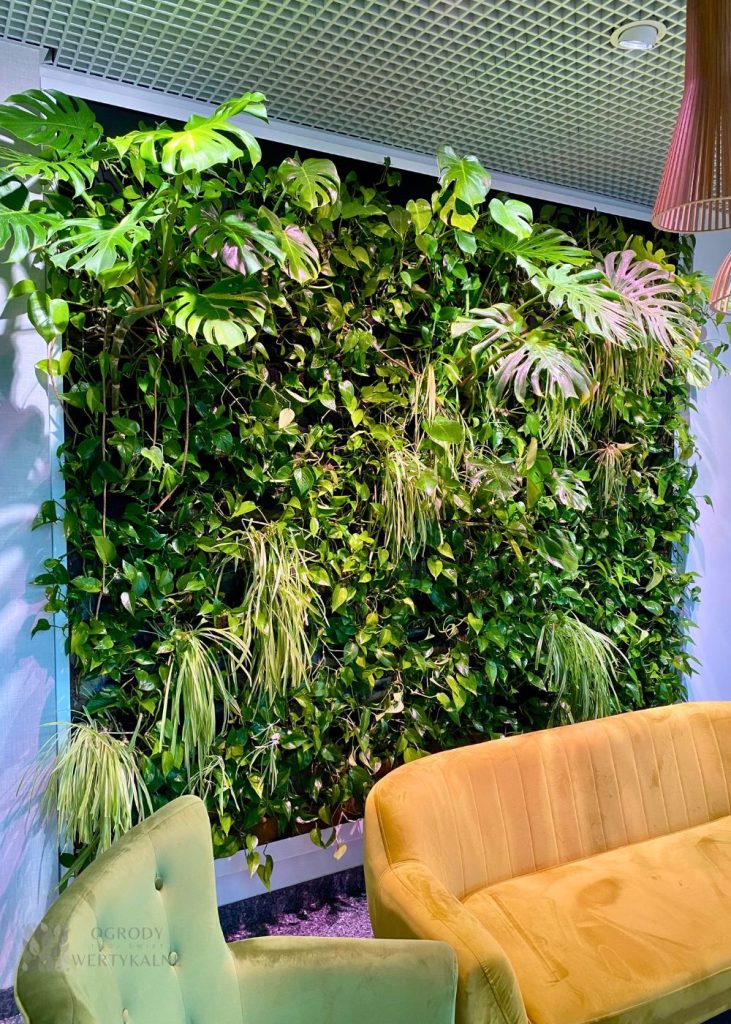
Vertical gardens with watering from a tank
A green wall watered from a water tank is a specific type of garden, distinguished by the way water is drawn for watering the plants. Such living walls are often made in places where there is no access to water and sewerage installations. The advantage of this solution is the possibility of installing this type of garden using only electric power (230V socket).
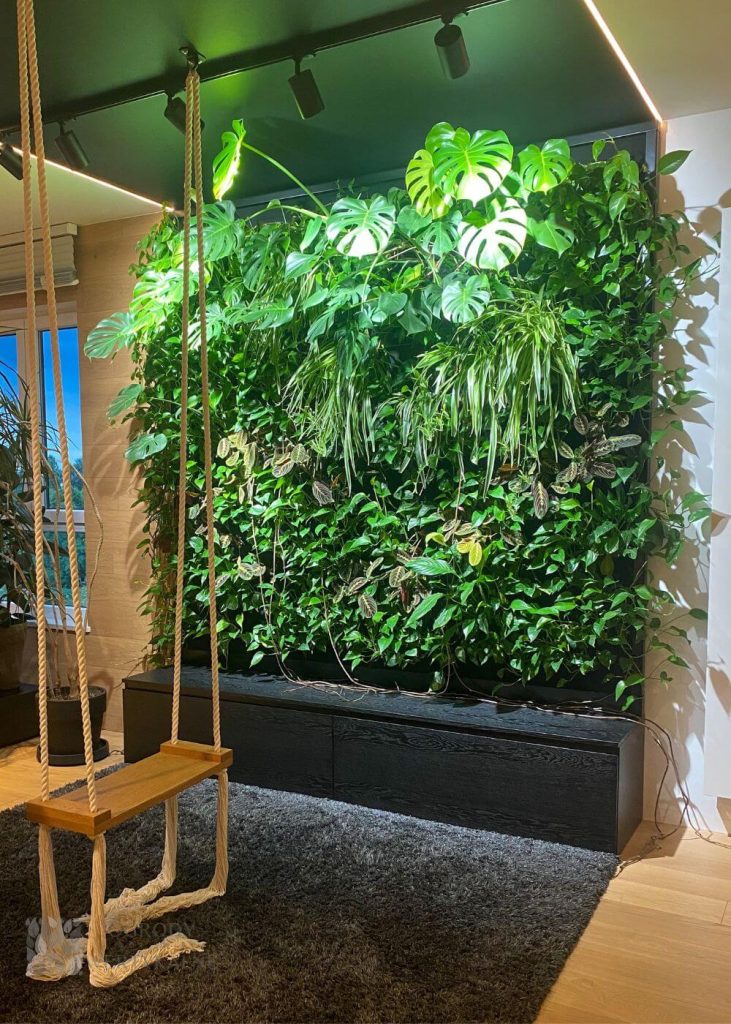
Outdoor vertical garden
External green walls with living plants provide an opportunity to arrange the facade of a building, but not only. An external vertical garden can also be built from scratch on freestanding supports.
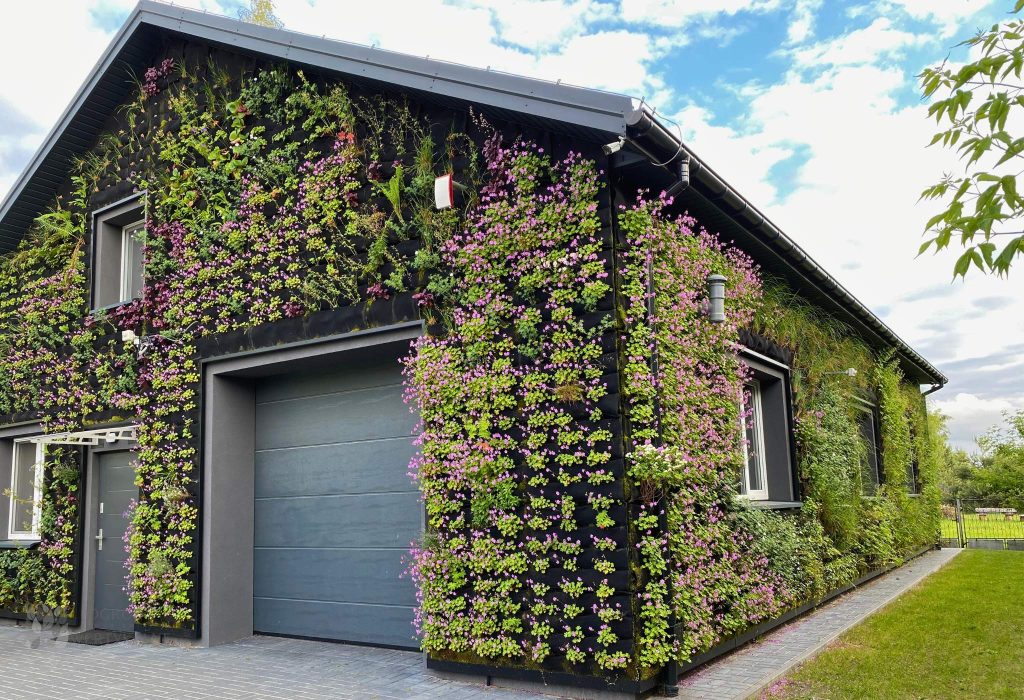
Mobile vertical garden
Used when the wall’s load-bearing capacity is insufficient, and meeting the water requirements in the form of drainage connections is difficult or involves an unwanted renovation. Mobile green walls with living plants can function anywhere in the home or seasonally outside.
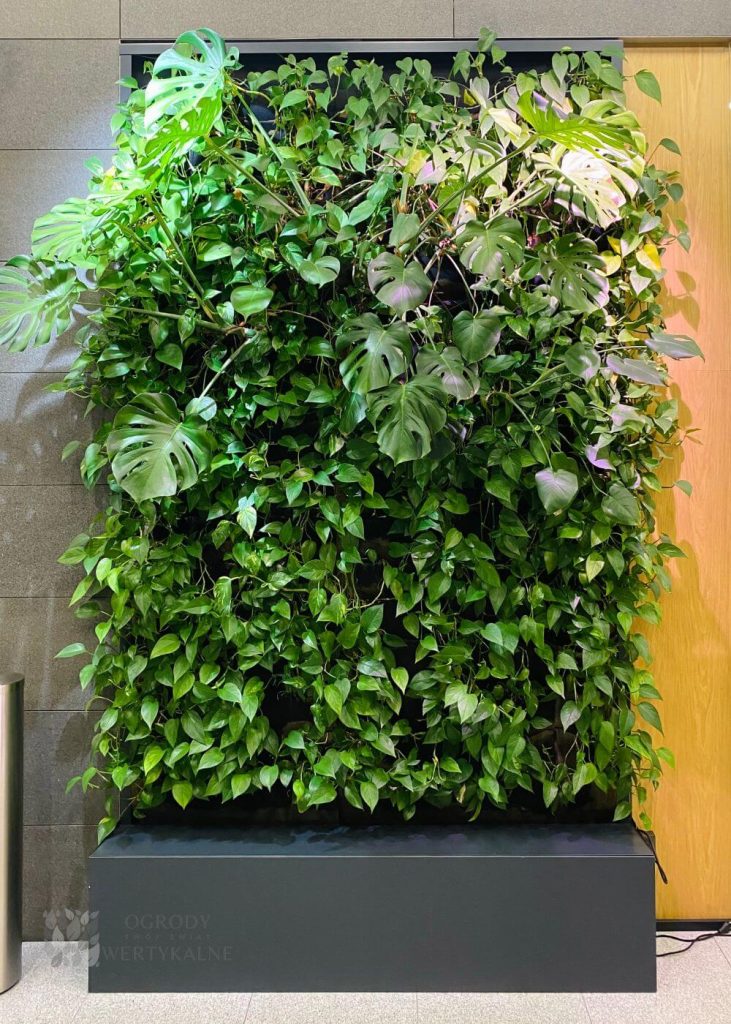
Mounting a vertical garden – you can do it yourself!
In addition to comprehensive installation services for the above types of vertical gardens, we also have sets of ready-made elements for self-assembly and Vertical Planter PlantaUp panels for sale. This allows everyone to construct their own vertical garden.
Impact of the vertical garden on the environment
Green walls with living plants are increasingly appearing in modern homes, offices, and urban spaces. Vertical compositions are gaining popularity due to their unique aesthetic qualities and impact on the environment. The living green wall keeps up with constantly changing trends thanks to the benefits it brings to the environment. By introducing nature into cities and interiors, it allows people to return to nature. Plants purify the air, increase biodiversity in their location, absorb heat and noise… Undoubtedly, they bring more benefits to the planet than dead forms: energy-consuming electric illuminations or costly concrete monuments. Green walls with living plants can also serve an educational function, acting as an interactive tool that allows direct contact with the world of flora. Participating in creating a garden provides an opportunity to observe the impact of plants on reducing carbon dioxide emissions, filtering air, or the influence of greening on the quality of life in the city. Green walls with living plants placed in educational institutions, schools, or public zones not only improve the appearance of these places but also raise awareness about sustainable development and environmental care.
To ensure that a vertical garden serves an ecological function, there is a constant need to optimize the manufacturing processes of the modules and monitor resource consumption during the use of the wall. Therefore, choosing constructions made from recycled materials equipped with water-saving technology such as the Vertical Planter PlantaUp panel is important.

